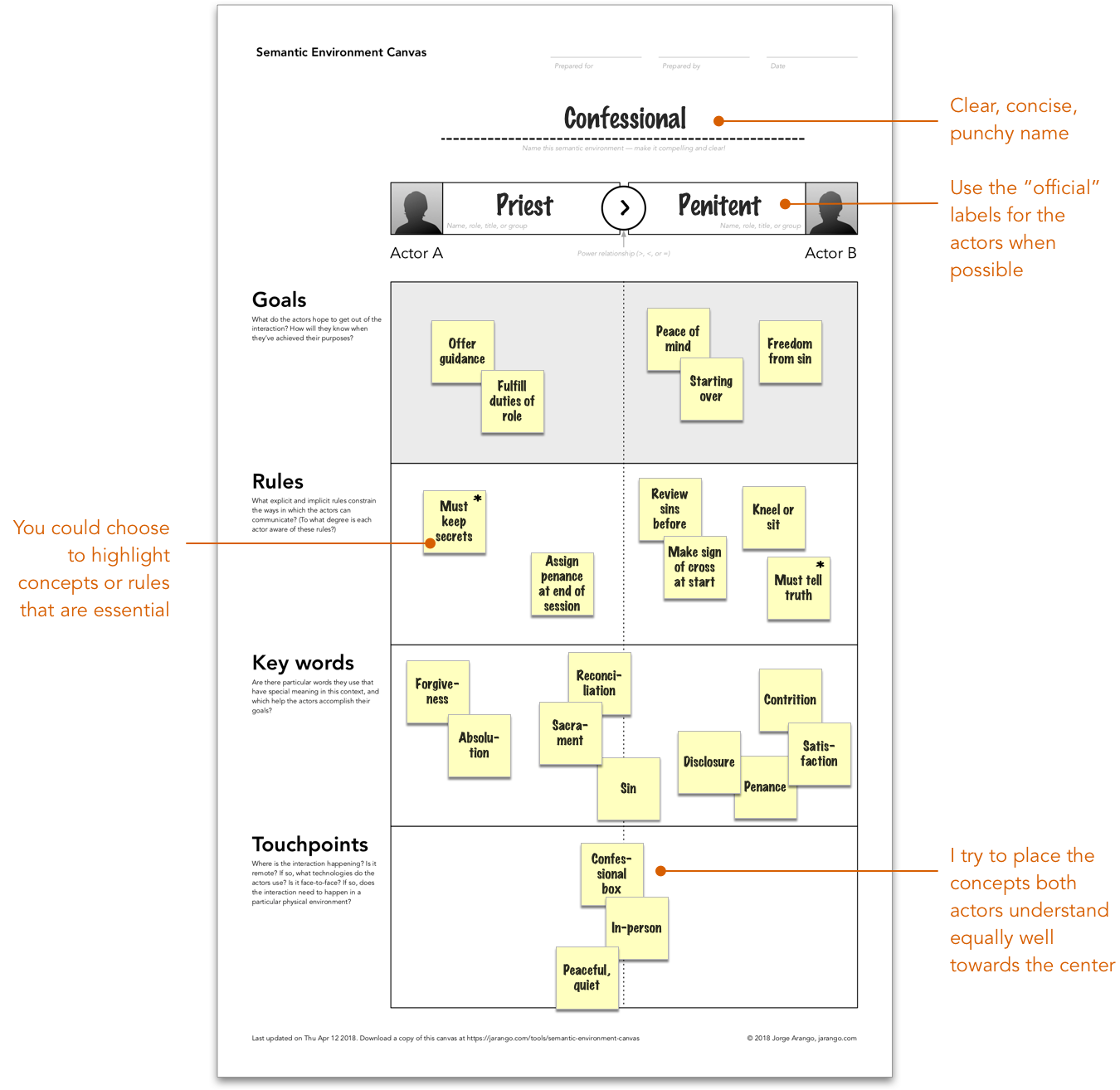In today’s blog we take a look into the book Gamestorming and deep inside our brains for some design thinking exercises that are great for marketing teams in their next design thinking workshop.
Focusing on attributes of a persona
This first exercise was created by Jorge Arango. The interesting part of this exercise is that it shows how two of your target audiences would interact with each other. If you’re a business that has personas that interact with one another, this is the type of exercise that would be fruitful. For example, a healthcare company would benefit from this exercise to dive into the doctor/patient relationship.
I realize the example of priest/penitent may not be the best example but it’s what Gamestorming used.
Now, this can all be done on a blank wall, that actually allows sticky notes to stay on it, or you can print out the Semantic Environment canvas in large format. As marketers, we would start by filling in the top with the name of our personas. Above that, we would set the context for which they interact.
Down the left side, a lot of the categories are self explanatory – goals, rules, touchpoints, and keywords. For keywords, it would be great to do some SEO research before the session to add keywords you know have volume that they’d actually be using online in addition to keywords that may be more “emotional” choices.
You’ll need a bunch of sticky notes and markers, enough for each member of your team to have their own set. Explain to the team that everyone will work together and do one row at a time.
By the end of this exercise, not only have you explored your personas more but it leaves you in a place where you and your team can start putting yourself in your personas shoes for the next exercise.
Instaglam – An exercise in how your persona engages online
For this exercise, have a few different photos ready that best resemble your personas as well as miscellaneous lifestyle photos that these people would “post”. Don’t worry too much about “what” the photos are, they’re merely for inspiration to your team. They can be shown on a projector or printed out and hung on the wall one-by-one. To start, put the first image up of the first persona with the first lifestyle photo.
Independently, your team will write a caption for that photo by that persona on a plain index card. Once everyone is done, they will get to share their caption. This exercise should focus on discussing the differences between each person’s caption, what people liked about them, and what they’d like to see more of. Now, move on to another post by that same persona. By the end of this exercise, the team should have a collective voice executed in many different ways. Once you get through both personas, try making captions for the same photo but by each persona. See how different they are and also how common.
By the end of these exercises, your team should understand a shared voice of these individuals.
These exercises can help your team achieve the following:
- Alignment and understanding of persona goals, touchpoints, keywords, and rules
- Interaction points between personas
- How personas may engage online given their background
- Insight into the customer’s potential voice and tone
Warm-up first!
Before starting your session, throw in an improv exercise to get the team ready to dish out their ideas. I recommend an exercise called, “5 Things”.
- In a circle, everyone keeps a beat by patting their thighs left, right, left, right, etc.
- Going in a circle, somebody begins by asking the person to their left for “5 things _____”. Those 5 things can be anything. 5 things that live in the jungle. 5 things you’d want during the apocalypse. 5 fast food chains, etc.
- That person then has to list 5 things in that category, ideally to the speed of the beat, and when they’re done the entire group says “5 things.”
- Now the person who just listed 5 things gets to ask the person to their left to list 5 things.
This continues until everyone has went. Now is the time to really stretch your thinking and have fun with the answers! If you’re short on time, you can also make the things be 3 but 5 forces somebody to really think on their feet.
If you have any research or have interviewed customers, it’s best to review that before this session.





